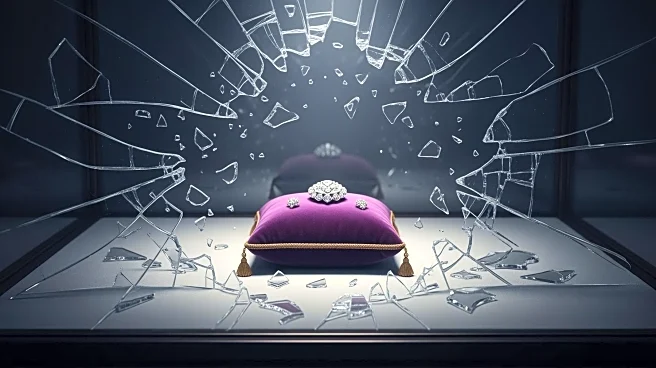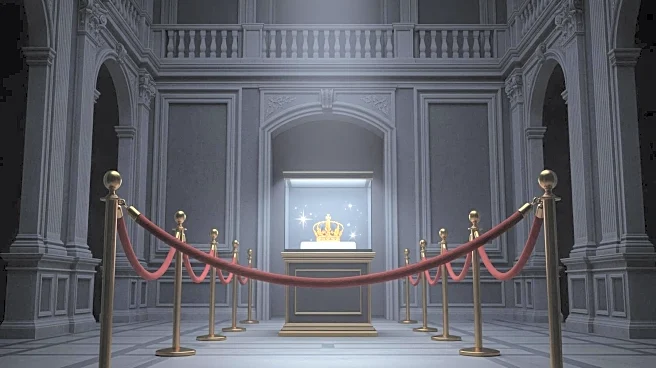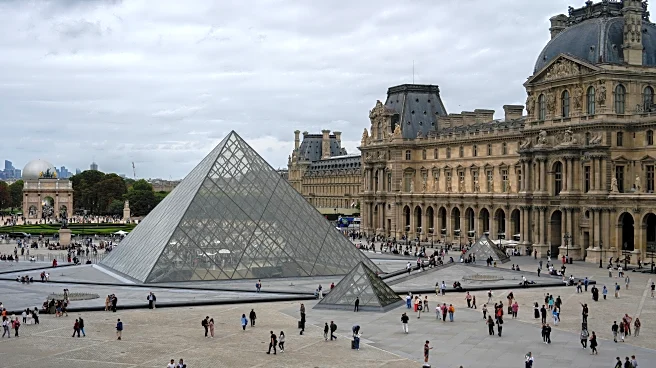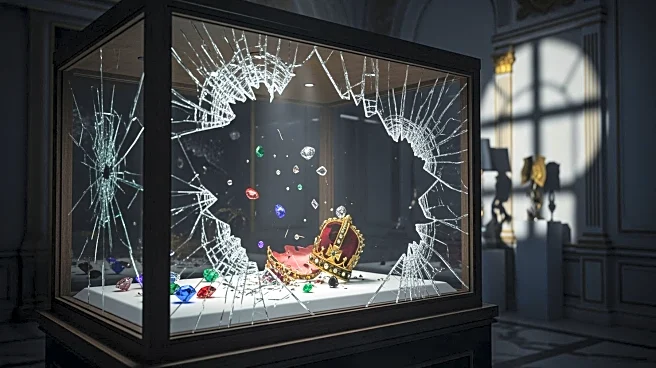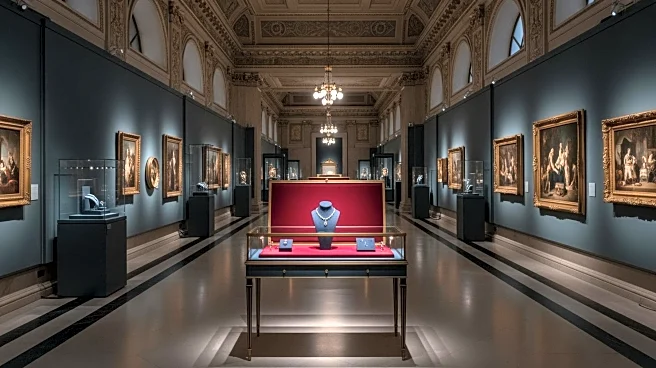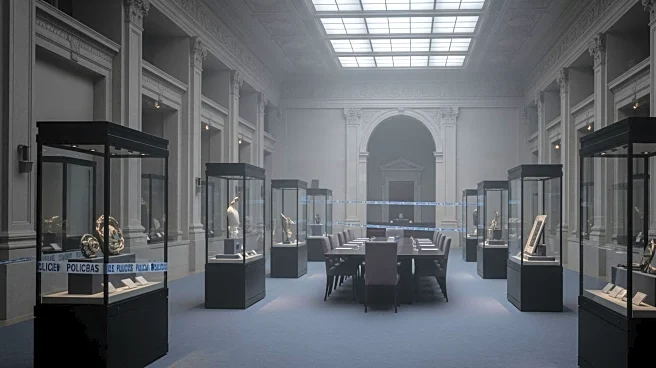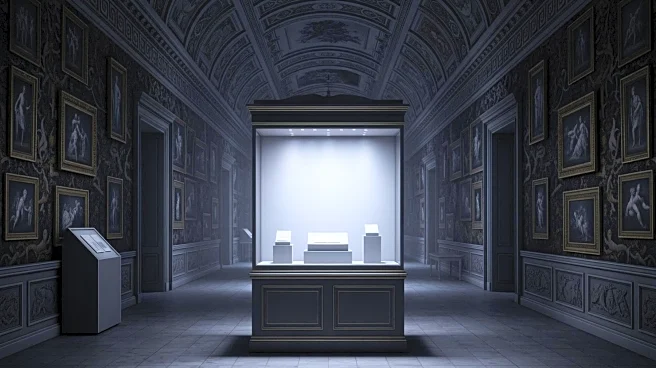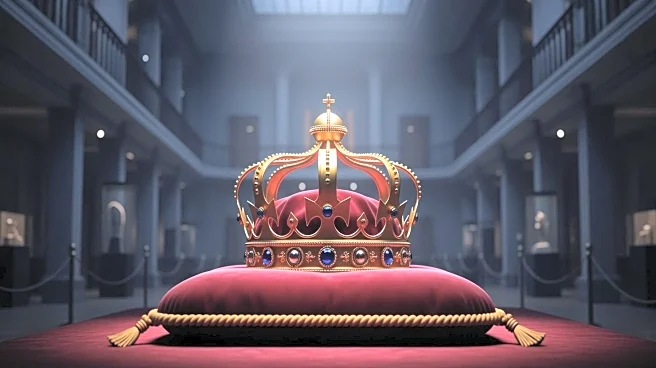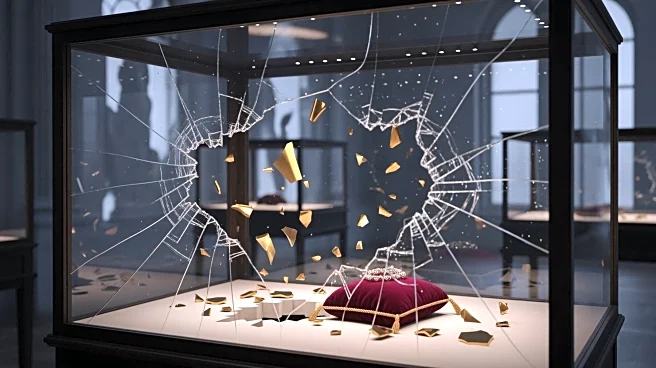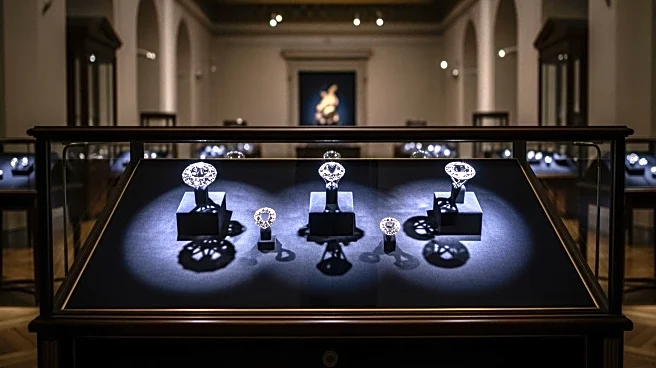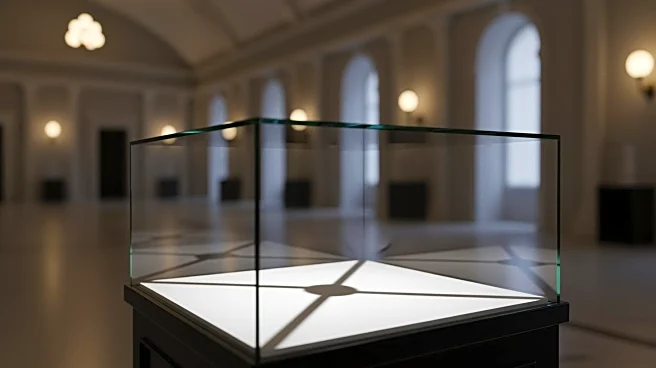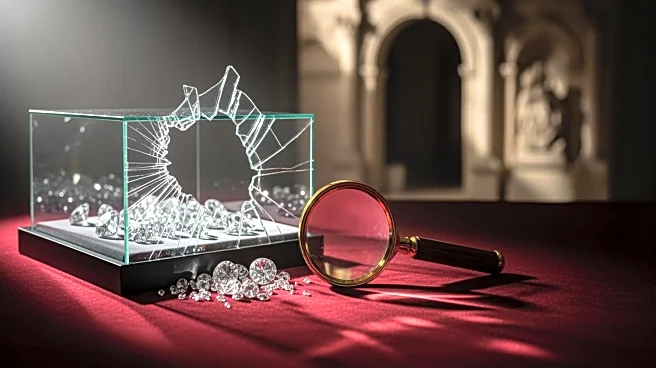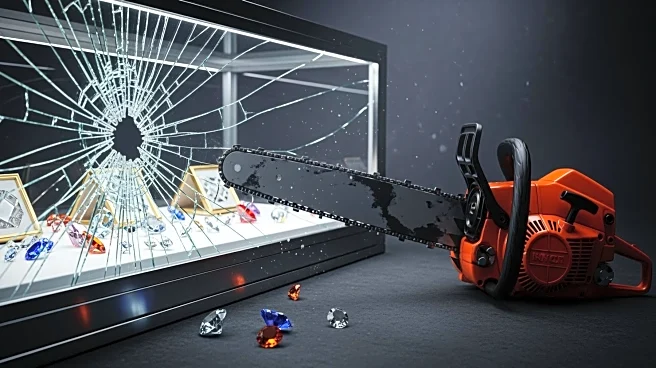What's Happening?
In a bold and meticulously planned operation, thieves successfully executed a daytime heist at the Louvre Museum in Paris. The perpetrators used a basket lift to gain access to the museum, forcibly opening a window to enter the premises. Once inside,
they smashed display cases and made off with jewelry of 'inestimable value,' according to France's interior minister and museum officials. The theft occurred on a Sunday morning, a time when the museum is typically bustling with visitors, adding to the audacity of the crime. The Louvre, renowned for its vast collection of art and historical artifacts, is now the scene of an intensive investigation as authorities work to recover the stolen items and apprehend those responsible.
Why It's Important?
The theft of crown jewels from the Louvre represents a significant breach of security at one of the world's most prestigious museums. This incident raises concerns about the effectiveness of current security measures in place to protect invaluable cultural heritage. The loss of such artifacts not only impacts the museum's collection but also deprives the public of access to these historical treasures. The heist could prompt museums worldwide to reassess their security protocols to prevent similar incidents. Additionally, the theft may have broader implications for the art market, as stolen artifacts often end up in illegal trade networks, complicating efforts to recover them.
What's Next?
Authorities in France are expected to intensify their investigation, employing advanced forensic techniques and international cooperation to track down the stolen jewels and the culprits. The museum may also review and enhance its security systems to prevent future breaches. Meanwhile, the art community and law enforcement agencies globally will likely be on high alert for any attempts to sell or smuggle the stolen items. The incident could lead to increased collaboration between museums and security experts to develop more robust protection strategies for valuable collections.
